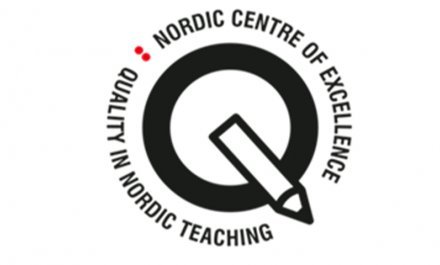- Study
- Student
- Research
- About UNAK
- University
- Schools & faculties
- Governance
- Rector
- Rector’s Office
- University Council
- University Assembly
- University Office
- Laws and regulations
- Organization
- Code of Ethics
- Councils and committees
- Strategies & policies
- On campus
- Human resource
Quality in Nordic Teaching (QUINT)

About the project
The project is for five years (started in 2018) and is a joint project between Norway, Denmark, Finland, Sweden, and Iceland. The research consists of extensive data collection in Nordic classrooms at lower secondary school and is intended to give a comprehensive picture of what characterizes excellent teaching in Nordic classrooms. Answers are sought to questions such as: In what way does teaching make a difference in students' learning and commitment; in individual subjects and across them; with or without digital support; in a homogenous or multicultural environment? How can classroom video recordings be used in teacher education? Can the methods of video technology and other digital technologies create a basis for new ways of research collaboration between researchers and teachers in the field?
The project received a grant of over NOK 25 million from NordForsk under the banner of Education for Tomorrow.
Members
The research group from the Faculty of Education is among the Nordic researchers of the project:
- Birna Svanbjörnsdóttir, Associate Professor and Head of the Faculty of Education
- Guðmundur Engilbertsson, Assistant Professor at the Faculty of Education
- Hermína Gunnþórsdóttir, Professor at the Faculty of Education
- Jóhann Örn Sigurjónsson, Postdoctoral Researcher at the Faculty of Education
- Rúnar Sigþórsson, Professor Emeritus at the Faculty of Education
- Sólveig Zophoníasdóttir, Adjunct at the Faculty of Education
Collaborators
Publications
- Gísladóttir, B., Björnsdóttir, A., Svanbjörnsdóttir, B. & Engilbertsson, G. (2023). Tengsl fræða og starfs í kennaramenntun: Sjónarhorn nema. Netla – veftímarit um uppeldi og menntun. https://doi.org/10.24270/netla.2023.5
- Sigurjónsson, J. Ö. (2023). Quality in Icelandic mathematics teaching: Cognitive activation in mathematics lessons in a Nordic context [Doktorsritgerð]. Háskóli Íslands. Opin vísindi https://hdl.handle.net/20.500.11815/3843
- Emilsson Peskova, R., Lindholm, A., Ahlholm, M., Vold, E. T., Gunnþórsdóttir, H., Slotte, A., & Esmann Busch, S. (2023). Second Language and Mother Tongue Education for Immigrant Children in Nordic Educational Policies: Search for a Common Nordic Dimension. Nordic Studies in Education, 43(2), pp. 128–144. https://doi.org/10.23865/nse.v43.3982.
- Svanbjörnsdóttir, B., Zophoníasdóttir, S. & Gísladóttir, B. (2023). Qulity of the stated purpose and the use of feedback in Icelandic lower-secondary classrooms results from a video study. Teaching and Teacher Education, 121. https://doi.org/10.1016/j.tate.2022.103946
- Sigurjónsson, J. Ö., Sigurðardóttir, A. K., Gísladóttir, B., & van Bommel, J. (2022). Connecting Student Perceptions and Classroom Observations as Measures of Cognitive Activation. Nordic Studies in Education, 42(4), 328–346. https://doi.org/10.23865/nse.v42.3636
- Gunnþórsdóttir, H., Gísladóttir, B. and Sigurðardóttir, Y, G. (2021). Teachers in new situations during the COVID-19 period: impact on professional collaboration and quality of teaching. Education in the North, 28(3) pp. 25-43. https://doi.org/10.26203/4p4k-2f22
- Nilsberth, M., Slotte, A., Høegh, T., Zophoníasdóttir, S., Högström, J., Johansson, A., Olin-Scheller, C. & Tarander, E. (2021). Classrooms going online: Nordic lower secondary teachers’ readiness at the COVID-19 outbreak. Education in the North, 28(3) pp. 44–62. https://doi.org/10.26203/6358-rk88
- Berglind Gísladóttir & Jóhann Örn Sigurjónsson (2021). Intellectual challenge in mathematics teaching in lower secondary schools, Icelandic Journal of Education, 29 (2). https://doi.org/10.24270/tuuom.2020.29.8